Along with other major insect pests (springtails, whiteflies, aphids), the mealybugs are common pests of indoor plants and other plants. Mealybug infestation deprives plants of nutrients, secrete sticky material on foliage, and attracts other harmful microbes. However, killing mealybugs from plants is not easy, but organic and inorganic methods can eliminate these common pests. Let’s dive deep on how to kill mealybugs.

What Are Mealybugs?
Mealybugs are soft-bodied and oval-shaped insects that have piercing-sucking mouthparts. They closely resemble scale insects, and their whole body has wax coatings. Like soft scales, the mealybugs produce abundant honeydew and are often associated with black sooty mold.

Mealybugs are wingless insects and appear as white cottony masses on leaves, stems, fruits, and flowers. They prefer warmer regions rather than moist climates for their growth and reproduction.
They insert their long stylet (sucking mouthpart of this insect) in the plant to suck sap from plant tissues. They belong to the insect family Pseudococcidae, including soft scales and cottony cushion scales.
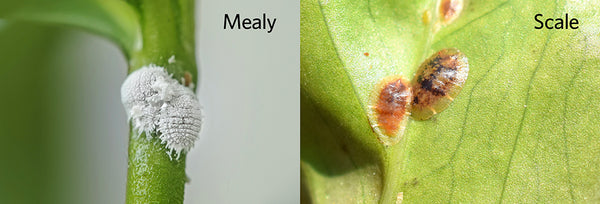
The body of mealybugs is distinctly segmented and covered with wax. The adult mealybugs have wax filaments around their whole body, while some species have larger filaments at the rear.
Just like the image below is presenting an adult mealybug.
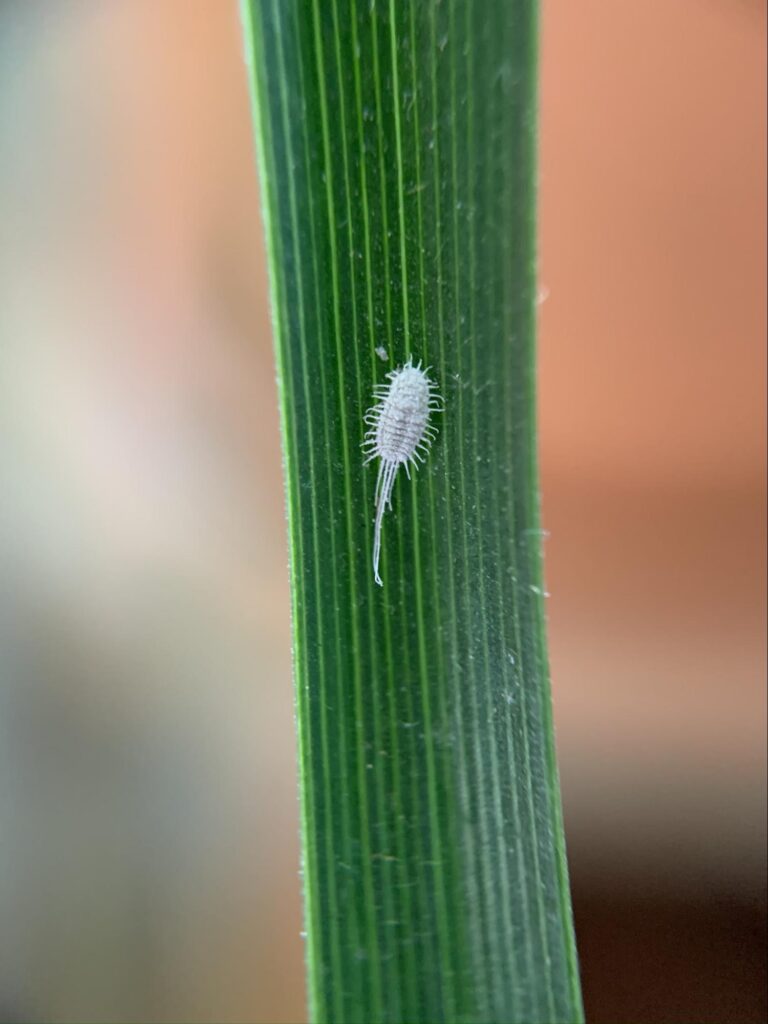
Damage Caused By Mealybug Infestation
Mealybugs feed on their host plants in colonies and do not cause much damage when in small numbers. However, under high numbers, mealybugs cause severe damage. The affected plant lose their strength, and their leaves turn yellow.
Mealybugs suck plant nutrients and excrete sticky honeydew and wax on leaves, fruits, and flowers. These excretions reduce the cosmetic value of indoor plants, garden flowers, and fruits. However, it becomes more damaging when black sooty mold grows on excretions, thus, impacting plant vigor and immunity.
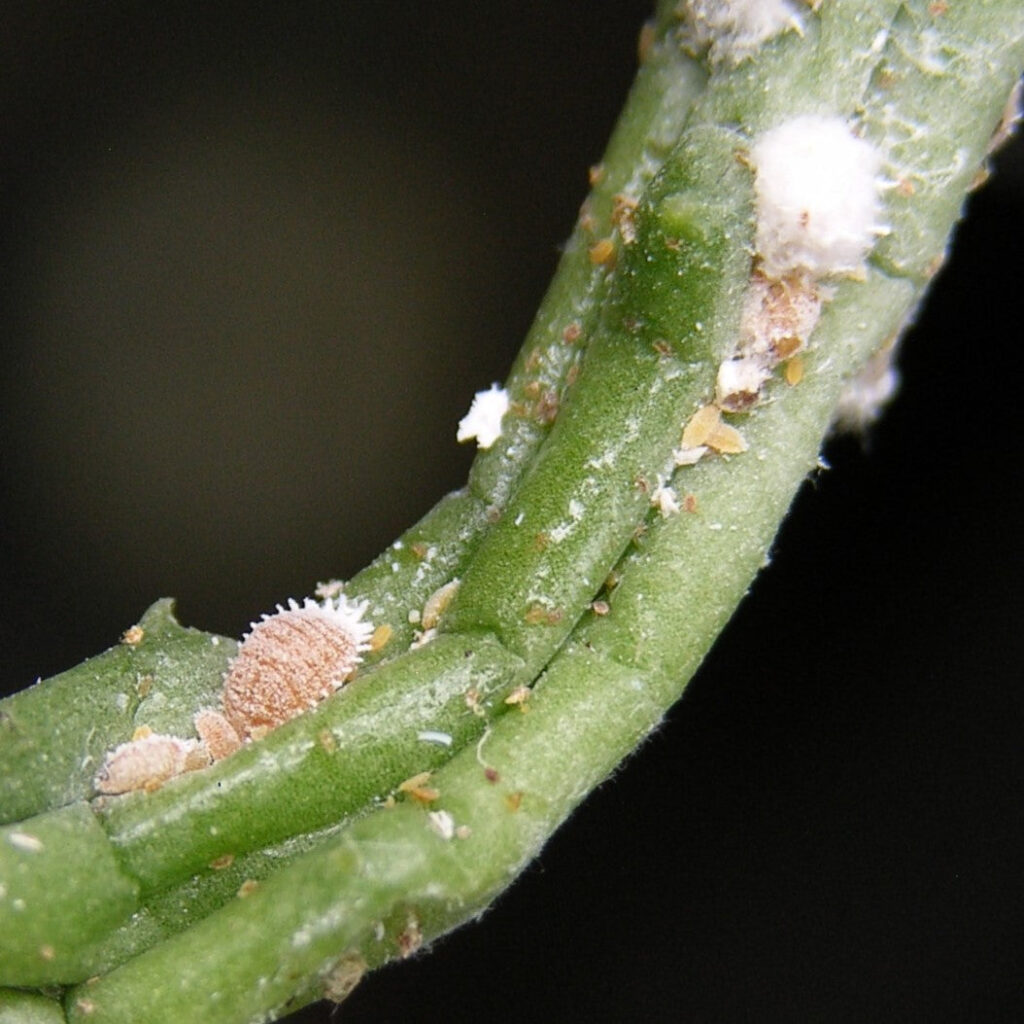
The continuous feeding of mealybug colonies slows down plant growth and induces premature leaf and fruit fall. On the other hand, the root mealybugs eat plant roots and interfere with nutrient and water absorption.
The indoor plants are more vulnerable to mealybug infestation and damage because the indoor plants have mild temperatures all year round and do not have exposure to natural enemies that ward off the damaging insects.
Mealybugs also transmit significant grapevine viruses and influence their fruit yield. However, these oval-shaped cottony pests are not harmful to ornamentals and landscapes.
What Are the Host Plants of Mealy Bugs?
Mealybugs are common houseplant pests that infect a vast number of host plants. The infected plants include cactus, rosemary, dracaena, ferns, ficus, hoya, philodendron, schefflera, and poinsettia.
A rosemary twig badly infected with mealybugs:
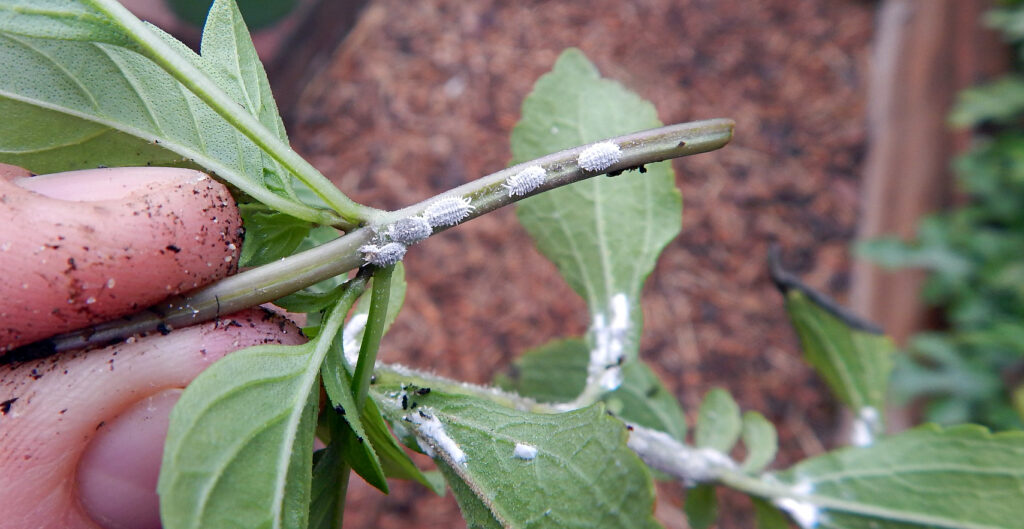
The woody ornamentals and herbaceous perennials include coral bells, figs, flax grasses, fuchsia, gardenia, hibiscus, jasmine, mimosa, Miscanthus grasses, and oleander. Mealybugs are severe pests on these host plants and injure them at vegetative and reproductive growth stages.
Among fruit trees, citrus and stone fruits have the most problems because this pest deters the fruit quality and yield due to its honeydew excretions.
How Do I Get Rid of Mealybugs?
To get rid of mealybugs on indoor and outdoor plants is difficult with insecticides but can be effectively managed by various organic and inorganic methods. And, by adopting different approaches to landscapes, greenhouses, orchards, and houseplants, mealybugs can be killed.
Biological Control by Beneficial Insects
Many natural enemies of mealybugs eat and feed on them, such as predatory wasps. In this way, these natural enemies keep a close eye on the numbers of mealybugs and control them. The wasps feed on mealybug colonies and lay eggs on or develop bugs. Even these parasitic wasps complete their life cycle inside adult mealybugs. The pupae of these parasitic wasps emerge from mummified mealybugs.
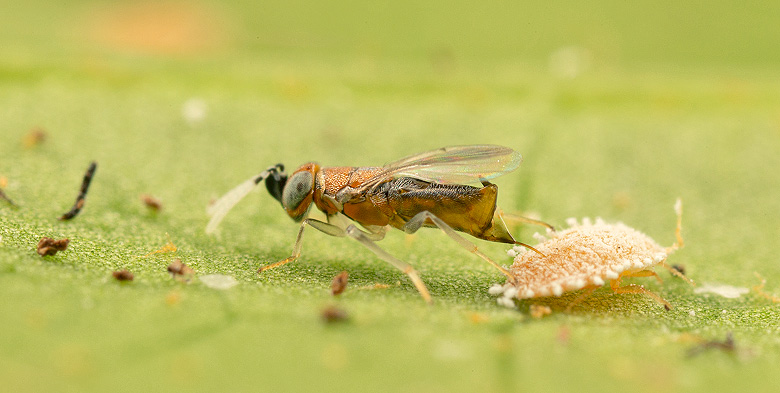
Leptomastix dactylopii is also sold commercially to kill mealybugs indoors and in other plants.
The image is an example of this parasitic wasp:
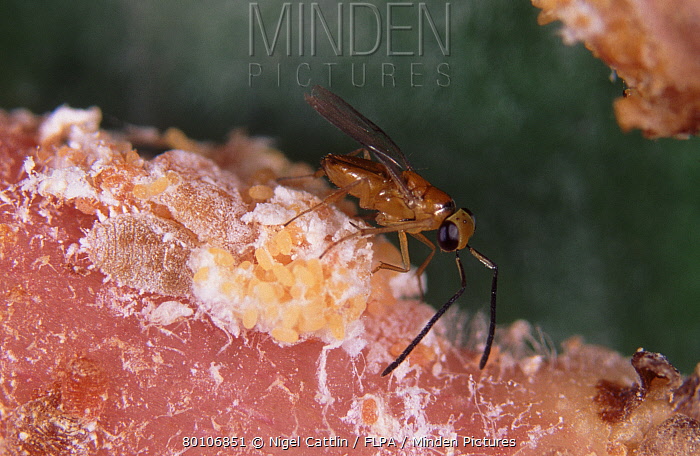
Examples of natural enemies are lady beetles, spider mites, green and brown lacewings, spiders, and pirate bugs.
The parasitic ladybird (Cryptolaemus montrouzieri) is also available commercially as a mealybug destroyer.

These beetles can successfully control mealybugs in gardens, landscapes, and interior spaces. The ladybird beetle voraciously eats mealybugs at all stages of their life cycle. The adult beetles are of reddish-brown and black color. The heads of adults are brown, while the hind parts are black.
The older beetle’s larvae have a waxy coating on their whole body and resemble adult mealybugs.
Note: The application of mealybug destroyers should carry on periods when there are plenty of egg sacs of mealybugs because lady beetles require these eggs as food to start their reproduction.
If the ladybird beetle is applied during low mealybugs, then the ladybird will not establish itself and not kill mealybugs.
Non-Chemical Treatment of Mealybugs
The chemical control of mealybugs is not successful indoors and outdoors because the waxy covering of mealybug bodies repel the insecticides and make it difficult for growers to control them with insecticides. Therefore, a non-chemical spot treatment can serve practical goals for managing mealybugs.
Spot Treatment of Mealybugs with Isopropyl Alcohol Spray
Mix 70% of isopropyl alcohol with water in a spray bottle and sprinkle this mixture on house plants where the mealybugs are noticed.

This mixture can also be rubbed manually with a cotton swab on plant parts to remove mealybug infestation.
The spot treatment effectively controls the mealybug populations on houseplants. However, this mixture requires repeat applications until the problem is gone.
Note: Under high mealybug populations, spot treatment of 10-25% solution is advisable with a spray bottle.
Cultural Control of Tiny White Bugs
Before purchasing new houseplants, scrutinize them against significant insect pests of interior spaces. If there is any mealybug infestation, remove them instantly by hand or quarantine affected plants; if not, discard the plant and remove dead plant parts from the nearby houseplants.
Regularly monitor plants and if there is any infestation of mealybugs, remove them or prune out the affected plants to block the further spread of mealybugs.
Do not over-fertilize the houseplants with nitrogen fertilizers. The constant fertilizer applications and regular irrigations will promote the new growths in plants and egg production in mealy bugs.
Remove older plants instantly from the garden and houseplant’s collection. These plants are weaker and promote pest infestation.
Maintain cleanliness around and nearby indoor plants. Remove broken and dead infected plants instantly. Do not over- and underwater the houseplants.
Neem Oil to Kill Mealybugs
Neem oil is effective against all significant pests of houseplants and works as both insecticide and fungicide.
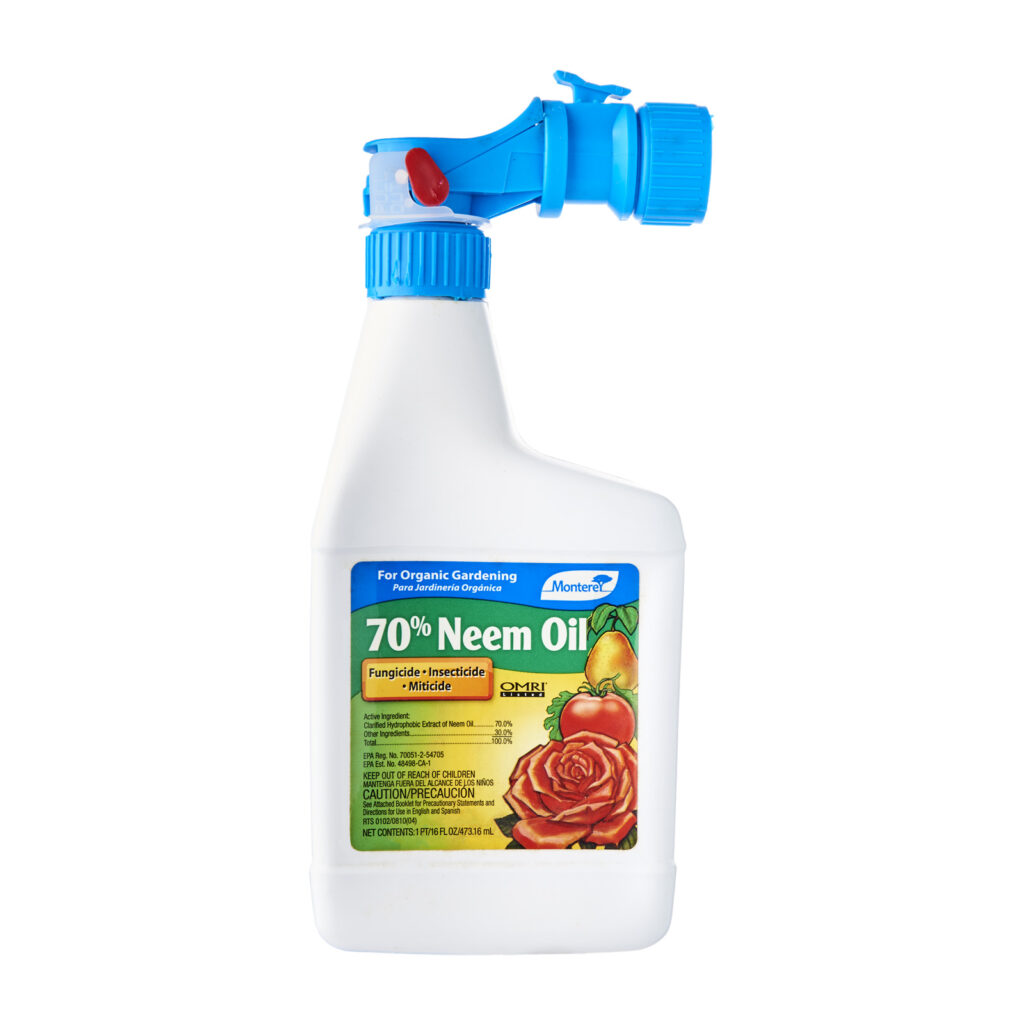
Neem oil applications interfere with the mealybug life cycle and kill these oval-shaped bugs’ larvae, pupae, and egg sacs. It also stops the growth of mealybugs and functions as an antifeedant. The neem oil spray dehydrates the mealybugs and kills them within an hour.
Mix one ounce of neem oil with one gallon of water. Thoroughly mix this solution and spray on all plant parts. Apply this solution every once or twice a week interval.
Note: The solution (neem oil and water) should cover all plant parts, upper and underside of leaves.
Insecticidal Soap to Kill Mealybugs
The application of insecticidal soap, such as safer soap, works best on heavy mealybug populations.
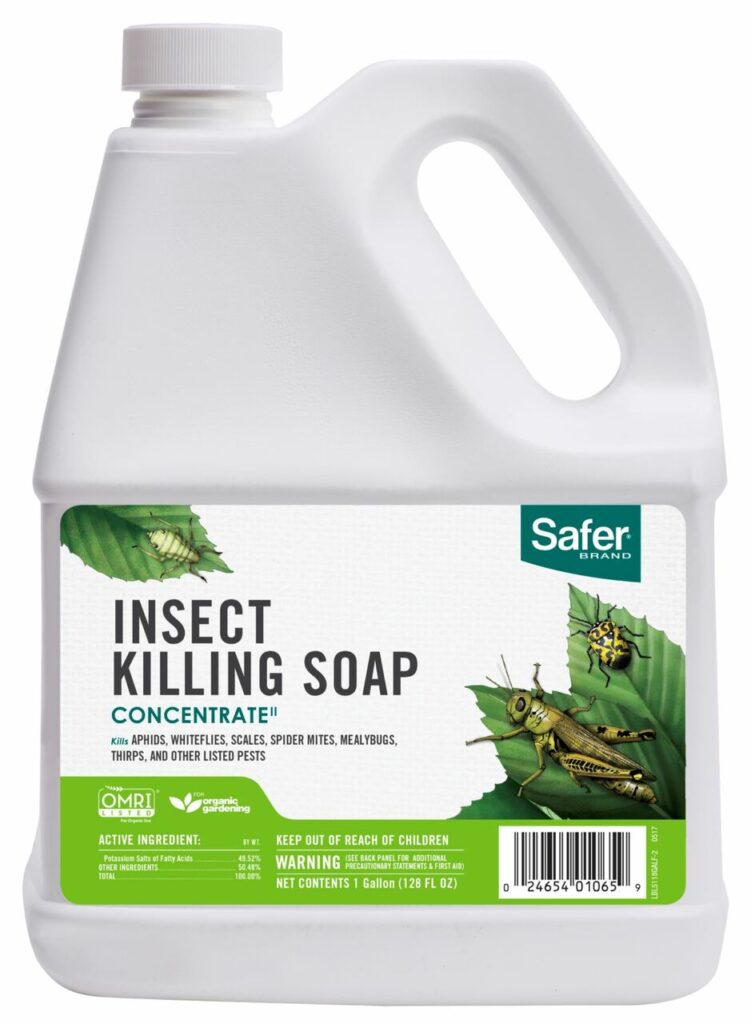
It damages the outer covering of the mealybug’s body and causes dehydration of soft-bodied insects. Then, it kills them within an hour.
Mix 2.5 oz/ gallon of water and apply this mixture whenever the infestation is noticed. Apply every 7-10 days to kill mealybugs.
Another benefit of these applications is they do not harm the beneficial insects and pets.
BotaniGard ES to Kill Mealybugs
It is a highly effective insecticide that kills the significant pests of houseplants. The BotaniGard ES is comprised of an entomophagous fungus that attacks the mealybug colonies and multiplies inside their bodies.
This product is applied in the form of fungal spores. These spores attach to insect bodes, germinate and penetrate through the mealybug body and rapidly multiply inside the insect body, thus causing death within seven to ten days.
How to Identify Mealybugs?
The identification of mealybugs is easy because they feed in colonies form and are primarily present at protected places such as between branch crotches, on a stem near the soil, and between touching leaves.
The female mealybugs are wingless and similar in shape to nymphs. At the same time, the male mealybugs have two tiny wings and two long filaments at the rear. Many mealybugs species can reproduce asexually and are slow crawlers.
Life Cycle of Mealybugs
The life cycle of mealybugs consists of eggs, nymphs, and adults. The female lays 100 to 200 eggs in a white cottony sac in 10 to 20 days. These white cottony sacs are attached to leaves, fruits, and flowers.
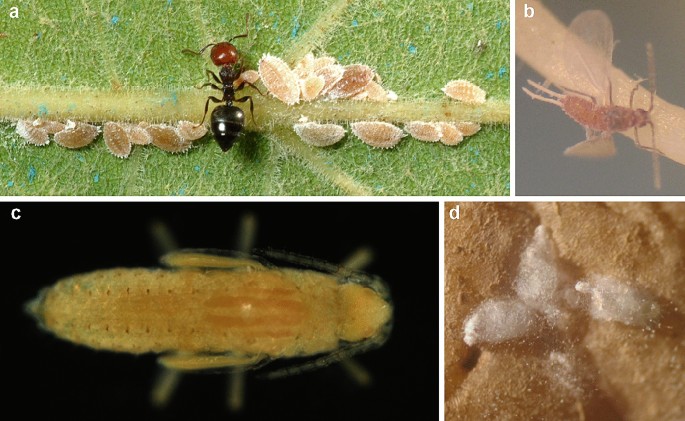
The newly hatched crawlers or nymphs are yellow or pink. They lack waxy covering and are pretty mobile. They excrete honeydew and start feeding on leaves and roots. In contrast, the adult and 4th stage nymphs have legs and slow crawlers.
The nymphs underwent much molting until they reached the adult stage. The mealybugs have six generations per year under favorable climate conditions. They prefer warm temperatures for their reproduction. And in houseplants, all steps are present throughout the year on the same plant.
Mealybugs are also confused with other pests of houseplants that produce waxy coatings, honeydew, and sooty molds, such as woolly aphids, whiteflies, and cushion scales.
What are the Different Types of Mealybugs?
Following are the examples of various types of mealybugs harmful to indoor and outdoor plants.
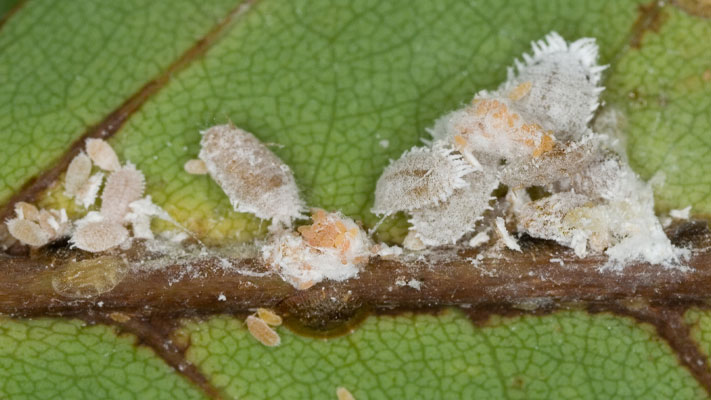
This type of mealybug is 4mm long and excrete honeydew on leaves, fruits, and stems. They hide their eggs under tree bark and crotches and are present under favorable temperature conditions throughout the year.
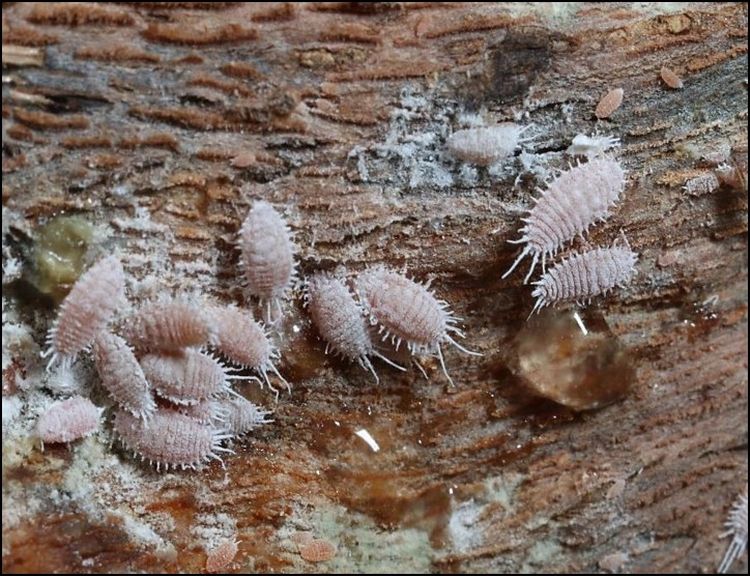
This type of mealybug is 2mm long and infects grapevines and potted plants. The whole body is covered with white powder, giving it a cottony appearance.
Frequently Asked Questions
How Do You Stop Mealybugs on Houseplants?
In houseplants, mealybugs can be repelled by the following methods:
- Hand-picking and washing of plant leaves with mild dish soap until the mealybugs gone
- By rubbing cotton swab of 70 percent isopropyl alcohol and water solution on infested plants
- By spraying a safer soap solution on plants with a time interval of seven to fourteen days
How Do You Treat Mealybugs Naturally?
Neem oil spray functions as a broad-spectrum insecticide of plant origin. It retards the growth and development of mealybugs at all stages (eggs, nymphs, and adults). The regular spray of neem oil repels the adults and dehydrates the egg sacs naturally. It is also practical because neem oil kills oval pests within an hour.
How Far Will Mealy Bugs Travel?
For most of their lifetime, mealybugs are immobile and slow crawlers. The female does not have wings, and male mealybugs have two tiny wings: the female and young instars crawl short distances. The mealybugs are only introduced into new places and regions through the infected plant parts or eggs.
They can also reproduce asexually. And few species of root mealybugs kept their eggs inside their bodies and gave birth to hatched instars.
Do Mealybugs Hate Humidity?
Yes, mealybugs hate humidity and prefer places with less than 20 percent humid conditions. Therefore, they mainly occur in interior spaces because the mild temperatures encourage them to reproduce quickly.
Can Mealybugs Live in Pots?
The root mealybugs live in potting soil and root balls, where they feed on plant roots and enjoy warmer temperatures. At the same time, the other species of mealybugs prefer upper plant parts such as leaves, stems, fruits, and tree bark.
What Is the Best Pesticide for Mealybugs?
The best pesticides against mealybugs are insecticidal soap, horticultural oils, and neem oil. The spray of insecticidal soap kills the mealybugs through contact. These soaps rupture the waxy coating of mealybugs and kill them within an hour.
The horticultural oils suffocate the instars and kill them. They kill the egg sacs, nymphs, and adults, and their applications are most effective in houseplants. Unfortunately, they also do not kill beneficial insects.
Can Mealybugs Survive Without a Plant?
Mealybugs can only survive for two to three weeks without their host plants. Once their host plant is absent, the female mealybugs cannot stay. And the nymphal stage can survive up to forty-five days without a host plant.
Do Mealybugs Lay Eggs in Soil?
Mealybugs do not lay eggs in the soil while they lay their eggs in white cottony sacs. And in each cycle, they lay 100 to 200 eggs and complete their life cycle within two weeks in warmer temperatures. And All their stages can be seen simultaneously on a plant due to the mild temperatures.
How Do Mealy Bugs Travel From Plant to Plant?
Mealybugs travel from plant to plant through infected stocks and feed off the growing tips of plants. They feed in colonies form and hide in tree barks, on the crown stem, and where the leaves are touching. By properly discarding the infested plant parts, the spread or travel of mealybugs can be stopped.
They have sucking mouthparts and suck out the plant nutrients from the phloem. Thus, reducing the plant strength against enemies. In addition, the continuous feeding of mealybugs induces foliage fall and makes plants susceptible to other insect pests. They also transmit viruses and secrete honeydew on fruits, leaves, and stems. The honeydew attracts black ants, which feed on it.
Sources for Further Reading
- Mealybugs Management Guidelines–UC IPM. (n.d.). University of California Integrated Pest Management. Retrieved February 8, 2022, from http://ipm.ucanr.edu/PMG/PESTNOTES/pn74174.html
- Mealybugs in Greenhouses. (2017, January 26). Center for Agriculture, Food, and the Environment. Retrieved February 8, 2022, from https://ag.umass.edu/greenhouse-floriculture/fact-sheets/mealybugs-in-greenhouses
- MEALYBUGS-Lance Osborne. (n.d.). The Pink Hibiscus Mealybug MANAGEMENT. Retrieved February 8, 2022, from https://mrec.ifas.ufl.edu/lso/PinkMANAGE.htm
After learning how to kill mealybugs, make sure to read our other tips:
Fungus Gnats in Houseplants & How to Identify and Effectively Control Them?







